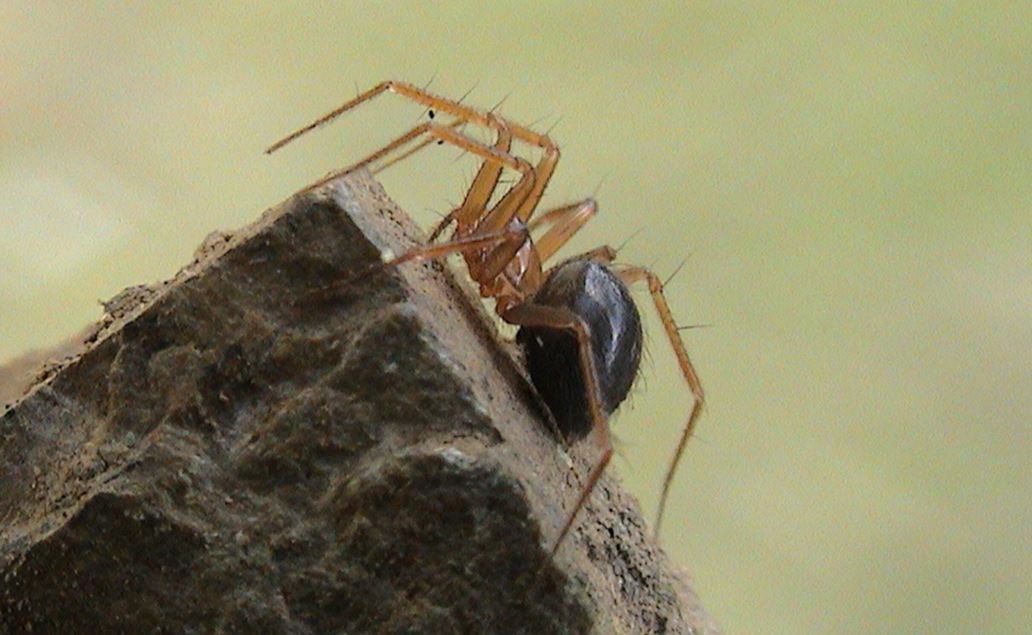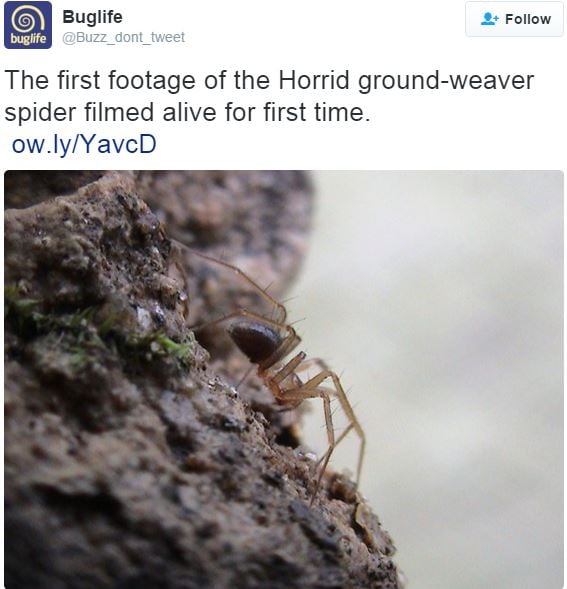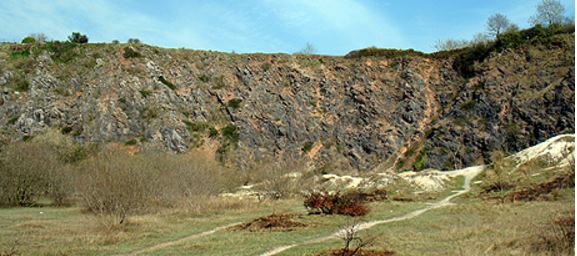The super rare Horrid ground weaver spider has been filmed alive for the first time, says conservation charity Buglife, after a new population was filmed in Plymouth, Devon, England. Britain’s rarest spider had never been captured in a photograph alive before.
For arachnologists (spider specialists) and amateur spider enthusiasts, this is really big news!
The Horrid ground-weaver spider (Nothophantes horridus), which has a total body length of just 2.5mm, or about one-tenth of an inch, has become rather a celebrity after a successful Crowdfunder appeal initiated by Buglife raised more than £10,000 in donations from members of the public.
 The Horrid ground-weaver (Nothophantes horridus) was first discovered in 1989. It is only known to inhabit one tiny geographical area of less than 1 km2 on earth. (Image: buglife.org.uk)
The Horrid ground-weaver (Nothophantes horridus) was first discovered in 1989. It is only known to inhabit one tiny geographical area of less than 1 km2 on earth. (Image: buglife.org.uk)
The donations went towards supporting new surveys for this elusive species across Plymouth and other parts of South Devon.
An ultra-elusive spider
Super-tiny (Nothophantes horridus), which lives inside deep crevices and cracks in the rock, only comes out at night, hence it is extremely difficult to find.
According to Buglife, it has only ever been sighted in the Plymouth area, and only ever at three sites, making this a globally major discovery. The fourth community of Horrid ground weaver spiders is within an industrial site in the Cattedown area of Plymouth.
South West Manager at Buglife, Andrew Whithouse, said:
“We’re delighted to announce that we’ve found the Horrid ground-weaver at a new site! And to now have photographs of live Horrid ground-weavers is wonderful. However, we need to continue the surveys and learn more about this special spider so we can ensure its survival.”
“We would like to thank all the people who donated to our Crowdfunder appeal, without them this work would not have been possible.”
 Buglife announces the remarkable filming of the eluvise Nothophantes horridus on Twitter. (Image: twitter.com/Buzz_dont_tweet)
Buglife announces the remarkable filming of the eluvise Nothophantes horridus on Twitter. (Image: twitter.com/Buzz_dont_tweet)
Buglife is currently working with the site owners to make sure that Horrid ground weavers are protected. It says further studies and research on Nothophantes horridus will continue in the spring thanks to funding from the Mohammed Bin Zayed Species Conservation Fund.
The spider was first discovered in 1989, then none were seen until 1995. Until 2016, only nine Horrid ground weaver spiders had ever been spotted, of which two were male and seven female.
Housing development plan rejected to save the spider
Plymouth City Council received a submission to build fifty-seven houses in Radford Quarry, where these spiders are known to exist. The Council rejected the submission.
Wainhomes (South West) Holdings Ltd., the developer, appealed and a formal planning enquiry ensued.
An online petition started by Buglife in 2015 to save Nothophantes horridus was signed by nearly 10,000 people.
In June 2015, the IUCN (International Union for Conservation of Nature) rated the spider as Critically Endangered and added it to the global Red List of Threatened Species.
 Planning application at the disused Radford Quarry was rejected, and suddenly the outlook for the tiny Horrid ground weaver spider began to improve. (Image: plymouth.gov.uk)
Planning application at the disused Radford Quarry was rejected, and suddenly the outlook for the tiny Horrid ground weaver spider began to improve. (Image: plymouth.gov.uk)
On 9th June 2015, the Planning Inspector rejected the appeal, citing concern for the survival of a spider species, notably Nothophantes horridus.
Regarding the decision, Mr. Whitehouse said:
“What a fantastic result for wildlife. Buglife believe that to knowingly cause the extinction of a species, no matter how small, is morally wrong.”
Video – Horrid ground weaver spider on film
